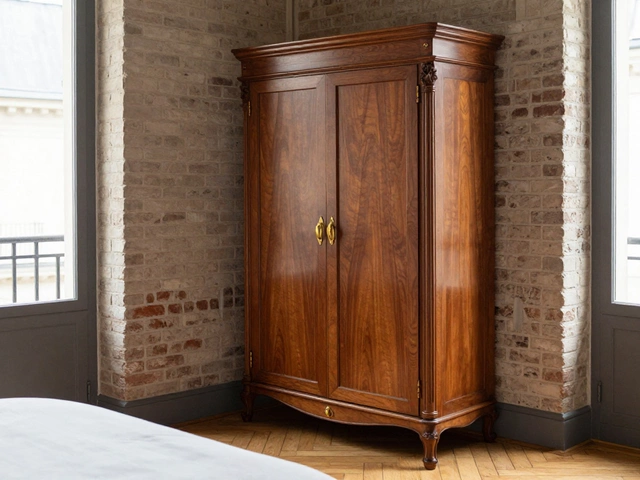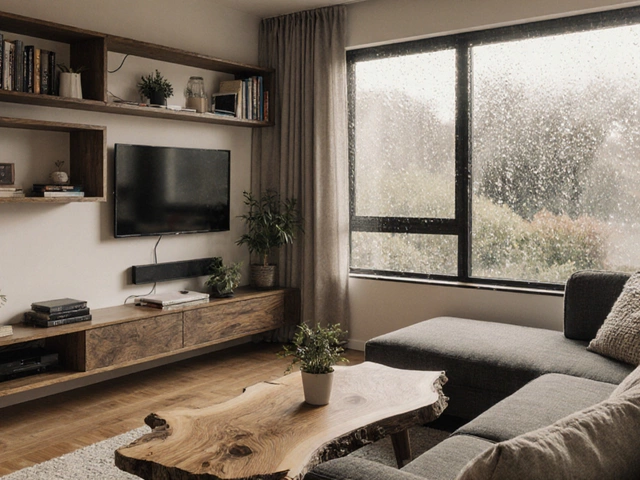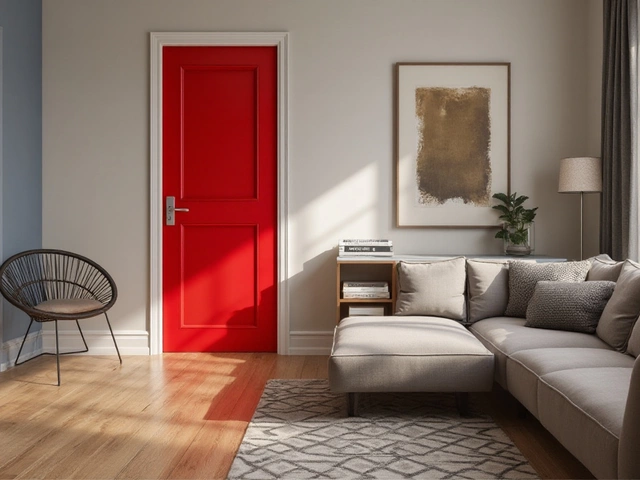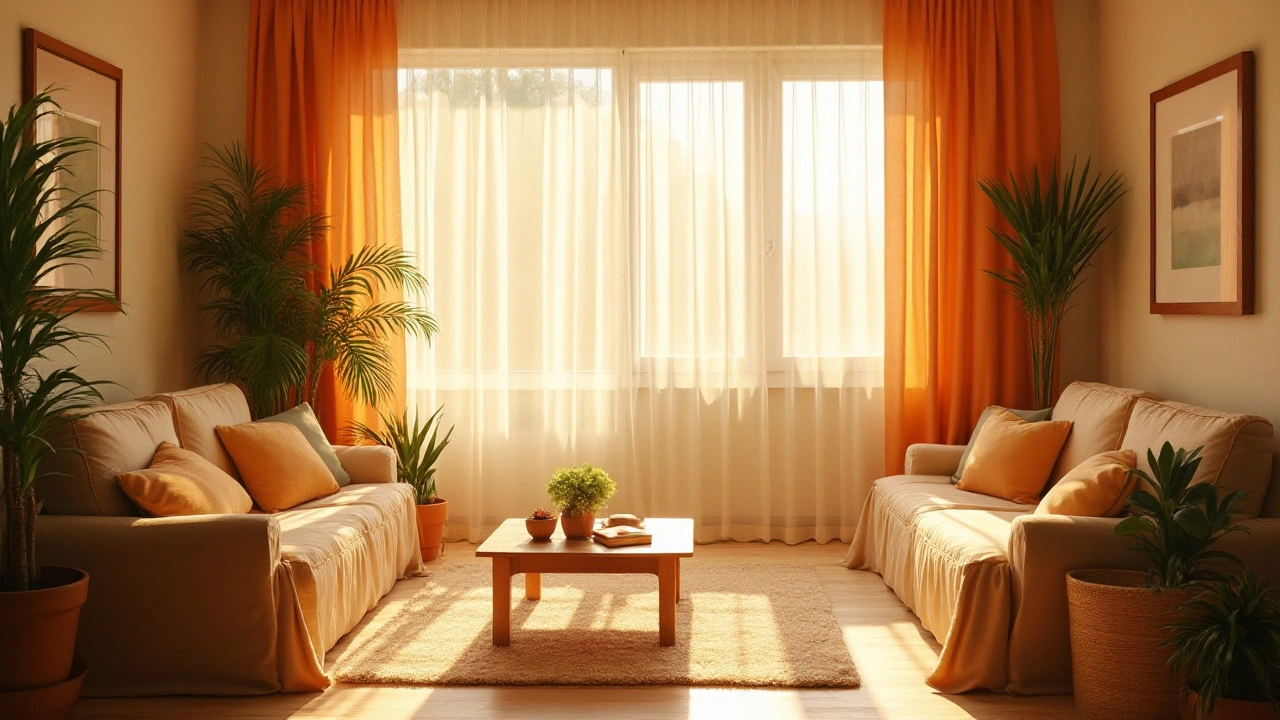
Choosing the ideal curtain color for your living room is a decision that can have a dramatic impact on the overall feel of your space. Curtains do more than block out light; they add warmth, texture, and a splash of color that can transform an ordinary room into something special. While it might be tempting to pick the first appealing color you see, considering the room's ambiance, lighting, and existing decor can guide you toward the perfect choice.
Colors can evoke various emotions and set different moods, which is why understanding how they interact with the living room environment is crucial. Plus, certain shades can make a room feel larger or cozier, depending on the desired outcome. Join us as we explore how to match your curtain colors thoughtfully with your walls, manage light entry in style, and get inspired by the trending hues of 2024, all while keeping your living room a reflection of your personality and taste.
- Understanding Room Ambiance
- Matching Curtains with Wall Colors
- Light and Curtain Colors
- Patterns and Textures
- Trendy Curtain Colors of 2024
Understanding Room Ambiance
Every living room carries its own unique personality, shaped by a myriad of elements like lighting, furniture, and decor. The ambiance of a room is the emotional tone that these elements create, reflecting the mood and comfort level of the space. When considering curtain colors, it is crucial to recognize how they will play into this delicate balancing act. Do your curtains need to complement an intimate setting with warm hues like reds and oranges that evoke coziness, or should they lighten up a cramped space with breezy shades of blue or green that suggest openness and tranquility? Understanding these subtleties requires a careful assessment of both the room's physical dimensions and the emotional response you want it to elicit.
The amount of natural light a room receives can dramatically alter its ambiance. North-facing rooms, which tend to be less sunny, often benefit from the use of brighter curtain colors that add a sense of illumination and cheerfulness, making the room feel less gloomy. Conversely, a south-facing room with plenty of sunlight might benefit from richer, deeper tones that can handle the intense brightness and provide a contrast to the starkness of the light. Colors like navy blue or deep emerald can bring a sense of elegance while also maintaining a balanced lighting effect in such rooms.
William Morris, a renowned designer from the 19th century, once said,
"Have nothing in your houses that you do not know to be useful or believe to be beautiful."This principle is particularly relevant when selecting curtains, as they should seamlessly blend function with style. Functionally, curtains help control light and provide privacy, but they are also a major visual element in your room’s design. An open-plan living area may feature different zones that distinguish between colors and textures without causing visual chaos, allowing each section to maintain its own ambiance. Think of curtains as the thread that weaves these zones together, connecting rather than disrupting.
For those venturing to infuse their living room with a particular vibe, it's helpful to use established color psychology principles. For instance, if the goal is to cultivate a serene environment, opting for neutral tones like taupes, soft greys, or whites can create a peaceful background that reduces stress. Such colors reflect light well, providing an airy feel that enhances the perception of space. On the flip side, if a vibrant and energetic atmosphere is desired, lively colors such as bold teal or orange can invigorate the room by energizing the senses and encouraging social interaction.
Ultimately, there’s no one-size-fits-all when it comes to selecting the right curtain color for your living room. This choice involves a blend of personal taste, practical considerations, and an understanding of how color influences the room's environment. By carefully weighing these factors, you can ensure that your curtain color selection harmonizes with your ideal living room experience, whether that’s a space for entertainment, relaxation, or a bit of both.
Matching Curtains with Wall Colors
When the time comes to choose curtain color, considering the shades already around you is a good start. Walls are the largest canvas in your living room, and they set an immediate tone. For example, if your living room is graced with soft, neutral tones—think whites, taupes, and greys—the options for curtains can go one of two ways. You might lean toward similarly muted hues to keep the space airy and open, or you could opt for bold colors like navy blue or emerald green to make a statement. The balance between the walls and the curtains is key, ensuring neither overshadows the other but instead offers a cohesive look. This harmony creates a flow that brings a sense of order and aesthetics to your living environment.
Contrasting your curtain and wall colors can be another approach that adds vibrancy and depth to a living room. Suppose your walls are already brightly painted, such as vibrant yellows or deep reds. In that case, you can either complement the warmth with softer curtain tones like cream or light beige or take a bold step by selecting complementary colors on the color wheel. Juscelino Kubitschek, an acclaimed Brazilian architect, once said,
"Good design is not just what looks good. It also needs to perform, convert, astonish, and fulfill its purpose."Following Kubitschek's insightful perspective, contrasting colors can achieve an astonishing transformation of your living room experience. The trick is to retain a balance in vibrancy, ensuring that while your curtains and walls differ, they still speak the same language of design.
Then there's the method of color layering, which involves subtly incorporating various shades of a single color throughout the room. This technique can offer an understated elegance. For instance, if the walls are painted a sky blue, choosing curtains a few shades darker can enhance depth and visual interest. It’s a classic approach that often promises sophistication and serenity. A quick note on trends: in 2024, we see a significant shift towards earth tones, with colors such as moss green and terracotta asserting their dominance. According to a study by the Interior Designers Society,
| Color | Popularity Percentage |
|---|---|
| Moss Green | 45% |
| Terracotta | 38% |
| Muted Blue | 17% |
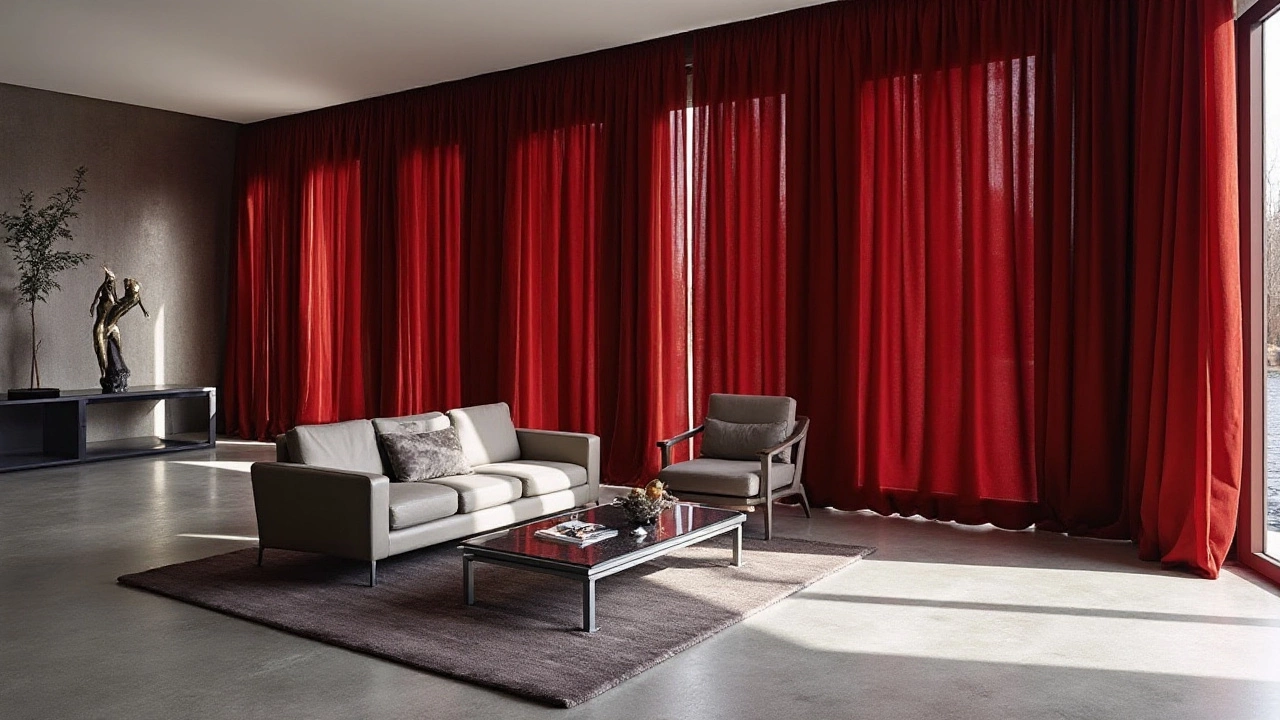
Light and Curtain Colors
When it comes to curtain color choices, one of the key factors you should consider is the way light interacts with your living room. As many interior designers would agree, natural light can significantly alter the perception of colors and thus shift the mood of a room. Rooms with an abundance of natural light offer the flexibility of experimenting with darker or richer hues, as these shades can absorb light and create a cozy, elegant atmosphere. On the contrary, if your living room is not bathed in sunlight, lighter curtain shades can help reflect what light does enter, brightening the space and making it feel more open and inviting. Light is not just about brightness; its direction and quality can affect how colors appear. South-facing rooms, receiving warm, direct light all day, can handle cooler tones that soften the sometimes harsh midday sun, while a north-facing room might benefit from warmer shades to add a sense of warmth and vitality to the space.
It's also worth noting how artificial lighting elements in your living room can influence curtain color choices. The hue of your bulbs—be they warm or cool tones—will affect how your curtains look during the evening hours. Today’s LED bulbs offer a wide range of color temperatures, allowing you to tweak the ambiance after sunset. Mix this with your curtain's tone, and you create a dynamic room atmosphere that evolves from day to night. Benjamin Moore, a well-respected authority in color trends, notes that "Interplay between light and color is essential for creating a balanced interior that resonates well with its occupants." This dynamic interplay informs a lot of color decisions, especially in spaces where people spend a good chunk of their time, such as a living room.
Another illuminating factor is the type of fabric chosen for your curtains. Thicker materials like velvet or heavy cotton tend to darken the room, as they absorb more sunlight. This makes them ideal for rooms where controlling light is a priority, such as during the summer months or if your living room doubles as a home theater. On the flip side, sheer or lightweight fabrics allow plenty of sunlight to pass through. They’re perfect for achieving an airy, light-filled environment, helping smaller rooms feel more spacious. Consider a living room decor with double-layered curtains, where you can combine both thick and sheer fabrics to have the best of both worlds—privacy when needed and an open, sunlit ambiance when it suits you best.
Given the increasing interest in sustainable living, many homeowners now seek more environmentally friendly options that also account for light control. Eco-friendly fabrics, such as bamboo or organic cotton, have become quite popular choices. These materials can still offer the classic look of traditional curtains while being much gentler on the environment. They also provide different opacities and textures, giving you control over how much light you want streaming into your living space. A study published in the Journal of Environmental Design revealed that using natural fibers in home decor has been linked to increased mental well-being, which is something to consider if you're reimagining your living space. By thoughtfully blending the fabric choices with the light dynamics of the room, you can craft a living room that feels harmonious and welcoming.
Patterns and Textures
When diving into the realm of curtain ideas for your living room, the addition of patterns and textures introduces an extra layer of depth and interest to the decor. Patterns can either be subtle or bold, each making its statement and catering to different tastes and styles. Striped patterns, for example, can create a refined and elongated visual effect, drawing the eye vertically or horizontally, depending on their orientation. This can work wonders in spaces that need a little added height or width.
On the other hand, curtains adorned with floral or geometric designs offer contrasting aesthetics. Florals can evoke a classic and timeless ambiance, often associated with vintage or shabby-chic styles, whereas geometric patterns are celebrated for their modern and often minimalistic appeal. When selecting a pattern, consider the existing elements in your living room. Does your room already have bold, statement pieces? If so, it might be wise to opt for a more subtle pattern to prevent clashing. Contrast this with a more muted room palette, where a bold, striking pattern could inject much-needed vitality and intrigue.
The texture of your curtains plays an equally significant role in the overall vibe of your living room. Heavy materials like velvet can instill a sense of luxury and coziness, ideal for colder climates and creating a plush, regal ambiance. In contrast, lightweight fabrics like linen or sheer offer an airier, more casual atmosphere, allowing natural light to filter gently into the space. This variation in fabric weight and opacity offers an opportunity to layer curtains, combining both style and functionality. In a recent home decor guide by House Beautiful, they suggest,
"Layering sheer and opaque curtains not only adds depth but also provides practical light control options."This technique is particularly useful in living rooms where adaptable lighting environments are desirable.
To elevate this further, consider incorporating embellishments such as tassels, tiebacks, or embroidery to your curtain design. These additions can seamlessly tie together the design aesthetic, accentuating particular curtains within the broader theme of your space. A well-placed tieback, for instance, can help create sophisticated drapery folds, enhancing both the fabric's pattern and texture, while also providing a practical solution for drawing and opening curtains with ease.
Finally, it's beneficial to stay abreast of emerging trends in curtain patterns and textures. For instance, a shift towards biophilic design in living spaces has led to an increased popularity in patterns that mimic natural elements, such as leaves or bird motifs, bringing the essence of the outdoors into your home. By merging these innovative patterns and textures with well-considered curtain color choices, you can craft a living room that is not only stylish but also personalized to your unique taste and the character of the home.
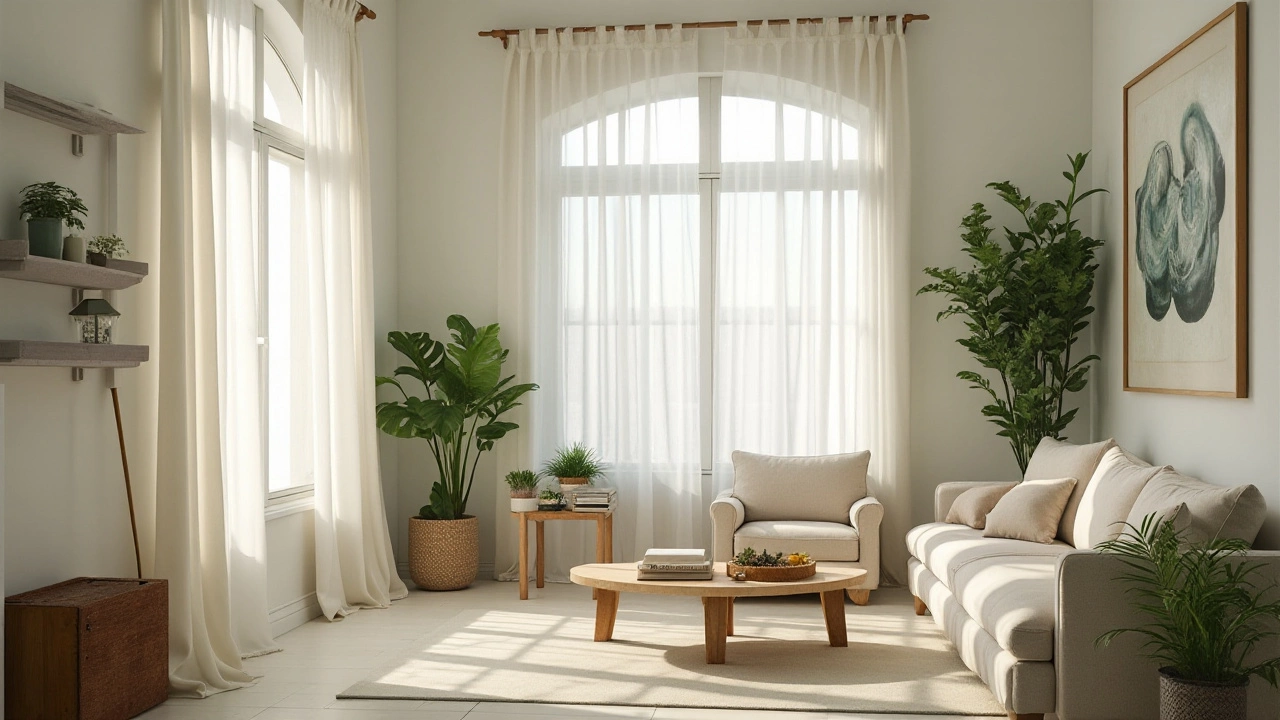
Trendy Curtain Colors of 2024
As 2024 unfolds, home decor enthusiasts have the thrilling task of embracing fresh curtain color trends that promise to redefine elegance in living spaces. This year, there's a noticeable shift toward earth-inspired hues that bring a sense of grounding and tranquility into our homes. Think of colors that feel like a warm embrace, with tones such as terracotta, deep forest green, and rich chocolate brown finding their way into trendy living spaces. These colors not only connect us with the natural world but also create a cozy retreat from the bustling outside environment.
In addition to earthy tones, 2024 is also witnessing a resurgence of soft pastels that complement modern and minimalist interiors. Delicate shades of blush pink, muted lavender, and powder blue are making waves, transforming living rooms into serene sanctuaries. These colors lend a gentle charm and introduce an air of sophistication. Pastels are versatile, working equally well in both bright and dimly lit spaces, making them a superb choice for diverse home designs.
The year is also all about striking a bold balance with unexpected contrasts. Surprisingly bright, jewel-toned colors like emerald, sapphire, and ruby are coming into play as accents. These vibrant shades create a focal point in the living room, drawing attention and sparking conversation among guests. Bold curtains set against neutral walls can be the statement piece that elevates the entire room. As the saying goes, a pop of color adds life to your space, making these choices daring yet rewarding.
For those who enjoy curated elegance, blending hues such as mustard yellow and charcoal gray can make an impactful combination. Using such complementary colors brings a modern flair to traditional designs and helps define different areas within an open living space, particularly when combined with functional lighting and lush greenery. This trend is perfect for not only personalizing the home but also ensuring it remains stylish and current.
Reflecting on the trends, remember that your choice should always reflect personal tastes while enhancing the existing decor. As aptly put by interior designer Lisa Stanton,
"Home is where the heart is, and the colors you choose should speak volumes about your personal style and the sanctuary you wish to create."Her insights remind us of the importance of picking living room decor elements that resonate on a personal level, ensuring each return home feels like a warm welcome.

